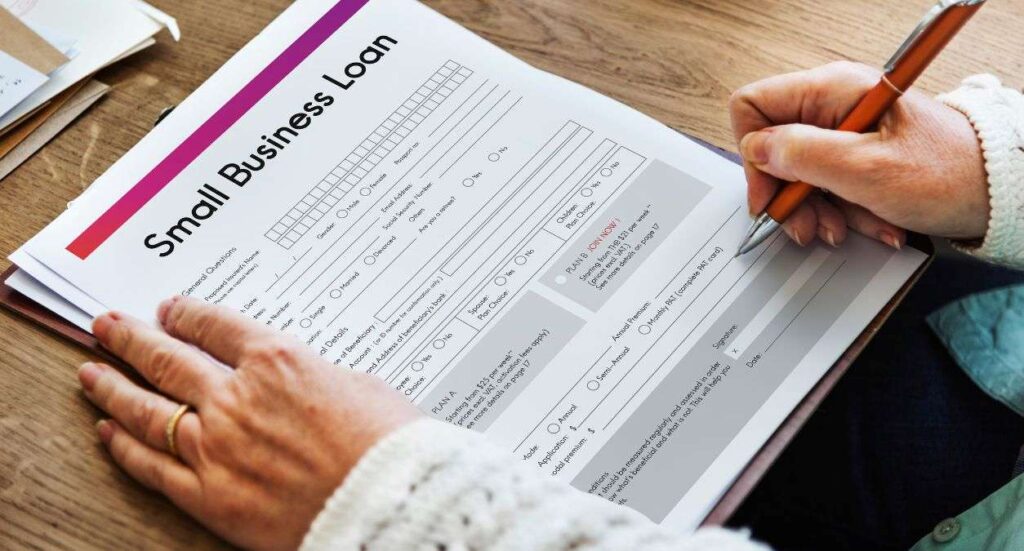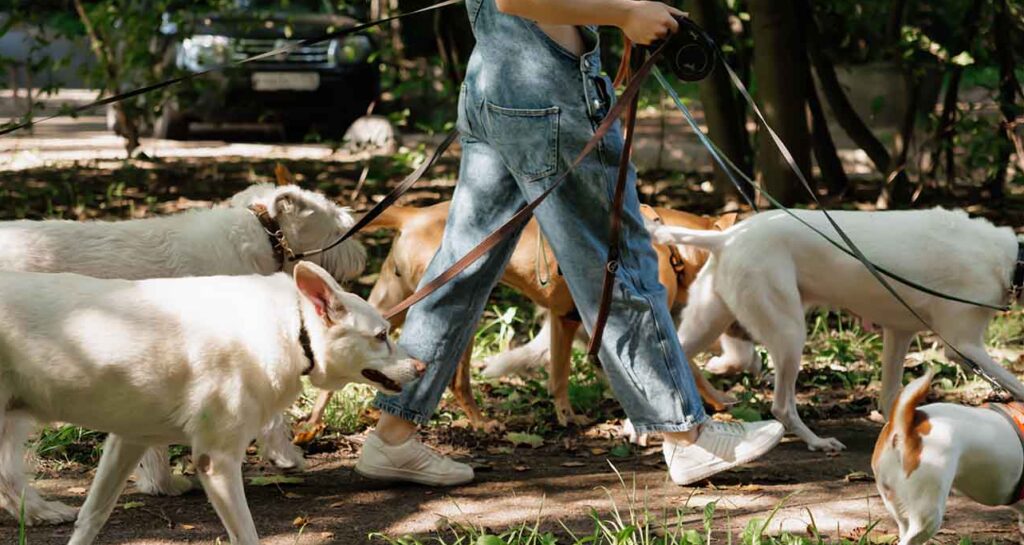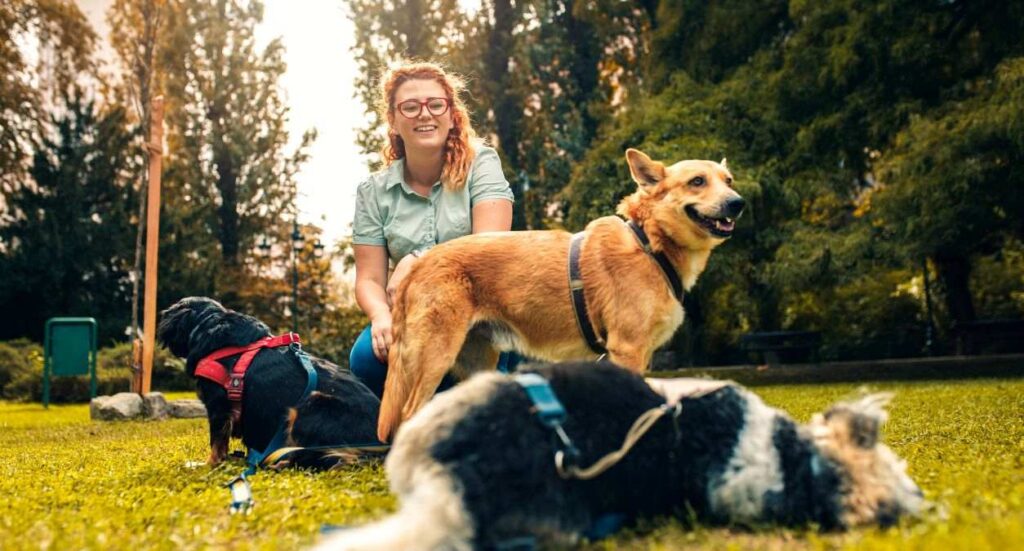Table of contents
Table of contents
Attending a Christmas event is must-do on many people’s festive calendars. As a result, a successful event will often attract large crowds looking to get in on the magic. As an event organiser, whether you’re running Christmas light switch-ons or winter wonderlands, you want to create an enjoyable experience for everyone, but with crowds come risks.
Managing crowds safely should be a top priority to ensure everyone has a safe and fun time. Whether you’re planning a small Christmas market, a carol concert, or a local winter fair, understanding how to assess dangers, mitigate risks, and involve key stakeholders is crucial to the success of your event.
Let’s explore some practical tips for crowd safety at Christmas events, from assessing potential hazards to creating emergency plans.
Assessing the risk
The first step in managing crowds safely is to assess the specific risks associated with your event. Christmas events, especially smaller ones, might not seem high-risk, but there are plenty of hazards to consider.
Understanding your event’s specific risks
Take a good look at the nature of your event. Is it a market with stalls, a festive parade, or a performance? Each type of event brings its own risks. For example, markets might deal with narrow aisles that can become overcrowded, while a parade could cause excitement that leads to crowd surges.
Analysing the venue and surrounding areas
Consider the layout of the venue. Are there clear entrance and exit points? Are there any narrow spaces where crowds might bottleneck? Ensure pathways are wide enough to allow smooth movement, especially if there are attractions or popular stalls that could draw large crowds. You’ll also need to think about the potential impact of winter weather – ice and snow can make movement difficult, and wet floors can lead to slips and falls.
Crowd management for safe movement
Once you’ve assessed the risks, you need a solid plan for managing the movement of people throughout the event. Proper crowd management ensures that attendees can move freely and safely without causing congestion.
Setting capacity limits
It’s essential to understand the capacity of your venue and adhere to it. Overcrowding can quickly lead to dangerous situations, especially if there is an emergency. Set a limit on the number of attendees and consider using pre-registration or ticketing systems to keep track of numbers.
Designing pathways for safe movement
Create clear pathways that direct people to and from key areas. Use signs, barriers, and staff to manage the flow of people and reduce the chances of bottlenecks. For larger events, you may want to consider one-way systems to avoid cross-traffic in crowded areas.
Staffing and volunteers: ensuring effective on-site support
Your team plays a crucial role in managing crowd safety. Both paid staff and volunteers need to be properly trained to handle the specific demands of your event.
Hiring and training crowd management personnel
Security personnel should be well-versed in crowd management techniques, including how to respond to emergencies, control crowd surges, and enforce entry limits. Ensure they understand the layout of the event and where the potential high-risk areas are.
Volunteers and their role in crowd management
Volunteers can be invaluable at smaller Christmas events. Train them to assist with tasks like managing queues, guiding attendees to exits, and offering help in case of minor injuries. They should also know how to contact emergency services if needed.
Managing emergencies and contingency planning
While we hope nothing goes wrong, it’s vital to be prepared for the unexpected. A well-thought-out emergency plan could make all the difference in how quickly and effectively you can respond to an incident.
Creating an emergency response plan
Your emergency plan should include detailed procedures for evacuations, crowd control, and communication. Make sure exits are clearly marked and easily accessible. Work with local authorities to develop a plan that takes into account the nature of the event and any site-specific risks.
Communication with attendees
In the event of an emergency, it’s critical that you can quickly communicate with attendees. Announcements, digital screens, or mobile alerts are all useful tools. Make sure your staff are also equipped with radios or mobile devices to stay in touch.
First aid and medical support
Having medical support on-site is key, especially for events that draw larger crowds or take place over several hours. Ensure that first aid stations are clearly signposted and that medical personnel are trained to deal with common crowd-related injuries.
Collaborating with key stakeholders
A successful Christmas event relies on more than just good organisation – it involves collaboration with various stakeholders who can help ensure the safety of everyone attending.
Working with local authorities and emergency services
It’s essential to liaise with local authorities, including the police, fire brigade, and ambulance services. This helps ensure that you’re compliant with safety regulations and have the necessary permits. Emergency services can also help you refine your safety plans and be on hand in case of an incident.
Engaging stallholders and performers in safety planning
Sellers and performers should be included in your safety briefings. Make sure they understand the layout of the venue, know where emergency exits are, and are aware of safety protocols such as fire hazards, particularly if they’re handling equipment like lights or cooking appliances.

Weather considerations and seasonal challenges
Christmas events are often held outdoors, and winter weather can add a new layer of risk. Make sure you’re prepared for the challenges that the season brings.
Planning for winter weather conditions
Ice, snow, and rain can make your event far more dangerous if not managed properly. Ensure that pathways are de-iced and well-lit. Provide covered areas where people can take shelter from the cold and consider how weather could impact any equipment you’re using, such as sound systems or lights.
Lighting and decorations: safety first
Christmas decorations add to the festive atmosphere, but they can also pose a hazard. Make sure that all electrical decorations are set up safely, with no exposed wires, and that they are checked regularly throughout the event. Avoid placing decorations in areas where they could obstruct movement or create a trip hazard.

Managing queues and reducing wait times
Queues are inevitable at busy Christmas events, but they don’t have to be a headache. Properly managing queues can reduce frustration and ensure crowd safety.
Ticketing systems and pre-registration
Consider using ticketing or pre-registration systems to limit the number of people entering at any one time. This can help you spread attendance throughout the day, reducing the risk of overcrowding at peak times.
Queue management techniques
Use barriers to guide attendees into orderly lines and ensure that queues don’t block key pathways. If possible, create separate waiting areas or stagger entry times to reduce long wait times.
Ensuring inclusivity and accessibility
Your Christmas event should be accessible and enjoyable for everyone, including those with disabilities or specific needs.
Accessibility for people with disabilities
Make sure your event is fully accessible, with ramps, accessible toilets, and clear pathways for wheelchairs. It’s also helpful to have staff available who can assist anyone who needs additional help.
Providing safe spaces for families and vulnerable groups
Create family-friendly zones or quiet areas where parents with young children or elderly attendees can take a break. This can help avoid accidents in busier areas and create a more inclusive atmosphere for all attendees.
Mitigating crowd-related risks: practical solutions
To ensure the smooth running of your event, it’s essential to be proactive about managing specific crowd-related risks.
Security checks and screening
Implement bag checks or security screening at entry points, but make sure these processes are efficient to avoid long queues. Consider how these security measures will impact crowd flow and adjust accordingly.
Preventing overcrowding in high-risk areas
Some areas of your event are likely to draw larger crowds, such as stages, food stalls, or attractions. Use barriers or temporary fencing to create separate zones and assign staff to manage these high-traffic areas to prevent crowd surges.
Having event insurance
However carefully you plan there is always a risk of unexpected incidents disrupting your event. Preparing for these eventualities is a necessary step. As well as contingency planning, having insurance can help protect you if an attendee should get injured as a result of the event, for example, or secure equipment if it is damaged or stolen.
Post-event review and continuous improvement
After the event is over, take the time to review how everything went and where improvements can be made for the future.
Reviewing the event’s safety performance
Gather feedback from staff, volunteers, and security personnel to identify any safety issues that arose. Did the crowd flow as expected? Were there any unexpected bottlenecks or incidents? Use this information to improve your planning for future events.
Gathering feedback from stakeholders
Reach out to sellers, performers, and attendees to get their perspective on how the event went. Their feedback could provide valuable insights into areas for improvement, particularly around crowd management and safety.
Managing crowds at Christmas events can be challenging, but with the right preparation, you can ensure a safe and enjoyable experience for everyone. By assessing potential risks, implementing strong crowd management strategies, and collaborating with key stakeholders, your festive event can go off without a hitch. Remember, safety comes first, and a well-organised event is the best gift you can give to your attendees.
Get Event Insurance from Protectivity
*Disclaimer – This blog has been created as general information and should not be taken as advice. Make sure you have the correct level of insurance for your requirements and always review policy documentation. Information is factually accurate at the time of publishing but may have become out of date.
Last updated by

















